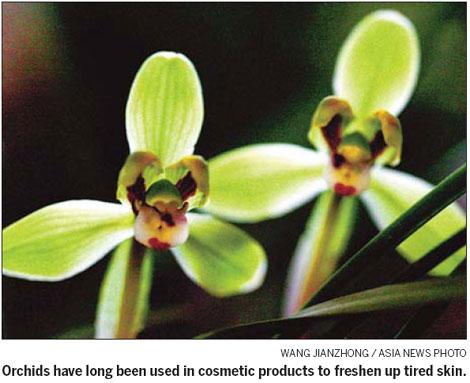
Testing new creams on bits of human foreskin to spare lab rats, or whipping seaweed and spicy Sichuan pepper into potions - greener, cleaner cosmetics are on the march.
"If you develop a product that's pleasant, efficient and safe, but that wastes energy and water, you're not doing your job," Gerard Redziniak, head of the 1,600-member French Society of Cosmetology, said at a two-day international congress on cosmetics research in the French city of Orleans.
However, Redziniak added that despite scientific advances in the field, the aim of the game broadly remained unchanged.
"The dream of finding the fountain of youth is our driving force, this desire to stay young, to look young."
Sichuan pepper for instance, a favored spice in Chinese and Japanese cooking, blocks electric signals on skin, enabling it to reduce irritation after a hair-dye or mosquito bite, but also "giving an immediate lift", says Christian Artaria of Italian research lab Indena.
"We're working on a wrinkle reduction formula," he adds.
One of the world's leading beauty firms, Guerlain, has long tabled on the orchid to freshen up tired skin, because of a hardy DNA enabling its survival in the most extreme plant world conditions.
Seaweeds, which likewise have learnt to survive harmful ultraviolet rays as well as living out of water for long periods at low tide, are ideal contenders for anti-aging, moisturizing and toning, says Greek researcher Vassilios Roussis, who reckons there are at least 25,000 known species.
"Marine algae work far better against the sun than synthetic sun screens," he says.
The good news for animals is that research increasingly is tested on bits of reconstructed human skin, made from human foreskin cells (keratinocytes) from one or several donors, grown in vitro for between a week to a month.
A pioneer in the use of reconstructed skin samples, L'Oreal based its know-how from the 80s on techniques used to treat severe burns. It now produces 150,000 human skin samples a year.
"It's far better to work on human in vitro than on animal in vitro, which is totally distinct from human skin," says L'Oreal's tissue engineer Annie Black.
Two of the company skin types, Episkin and SkinEthic, have been rubber stamped by the European Center for the Validation of Alternative Methods (ECVAM), which gives the green light to non-animal tests. A US model, EpiDerm by MatTek, has also been approved by ECVAM.
Pigments and immune cells can also be introduced as well as sick cells. L'Oreal for instance has formulated a skin type including hypersensitivity to the sun.
Will scientists soon be offering reconstructed skin with hair? "We're working on it," Black says. "But it's a bit like the search for the Holy Grail."
Greening the industry by preferring nature's output over synthetics was all very well, says French chemist Chantal Larpent, but what about avoiding toxic solvents harmful to the environment.
"Water is a cheap, safe and non-toxic solvent," she says.
Agence France-Presse
(China Daily 04/07/2010 page19)
